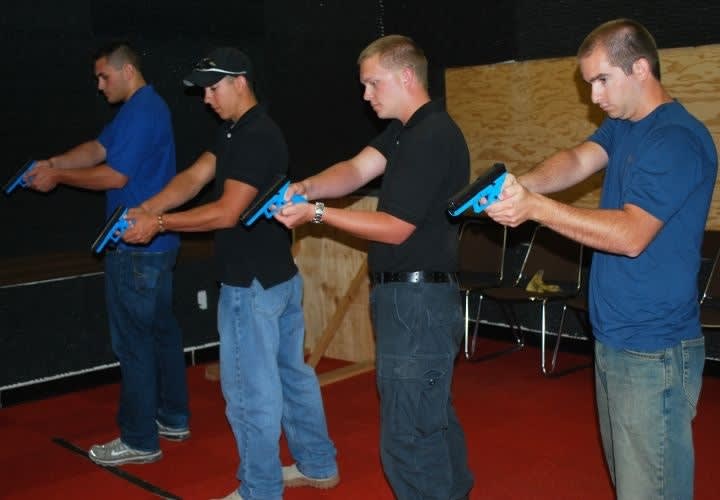These people will have to practice, and you'll need to inform them of that fact. You should also give them exercises to do to strengthen their grip. It also may give people time enough to improve. The trigger-pull assessment is to be conducted by members of your training staff. However, it should be expected that students should be able to complete Assessment #1 with no problem.
Based on our current research, students should score a minimum of 50 with the strong hand and 35-40 with the weak hand on Assessment #2. Average scores should range much higher (70s and 80s), and you may see some in the 100s. This has proved to be good data so far but please keep in mind there have been no scientific studies done on this yet. If they score in the 40s or lower, it may mean you have to come up with a plan for them. It is also a good idea to provide warm-up periods (to stretch, shake out the hands) and a small break between the tests. Departments should use their own courses of fire and times and adjust things that best suit them. Try it yourselves and see how you do.
Assessment #1
To establish a baseline, the new candidate should be required to safely pull the trigger X-amount of times (x=2, 3, 4, or 6 rounds fired) within the allotted time limits (such as 3, 5, 10, or 20 seconds) for each stage of fire on your qualification course. You should use your own departmental handgun course of fire when you do this. The assessment should be patterned after your course and conducted in the same series of stages and intervals as you would on the range.
The time frames involved may be modified to account for position changes or when you are simulating reloading. The training officer will call the course out loud and the candidate will respond to the directions by pulling the trigger the appropriate amount of times for each stage. The candidate should use the right, left, or both hands (as dictated by the course) and they should use the position that is specified (such as kneeling, standing, or prone).












